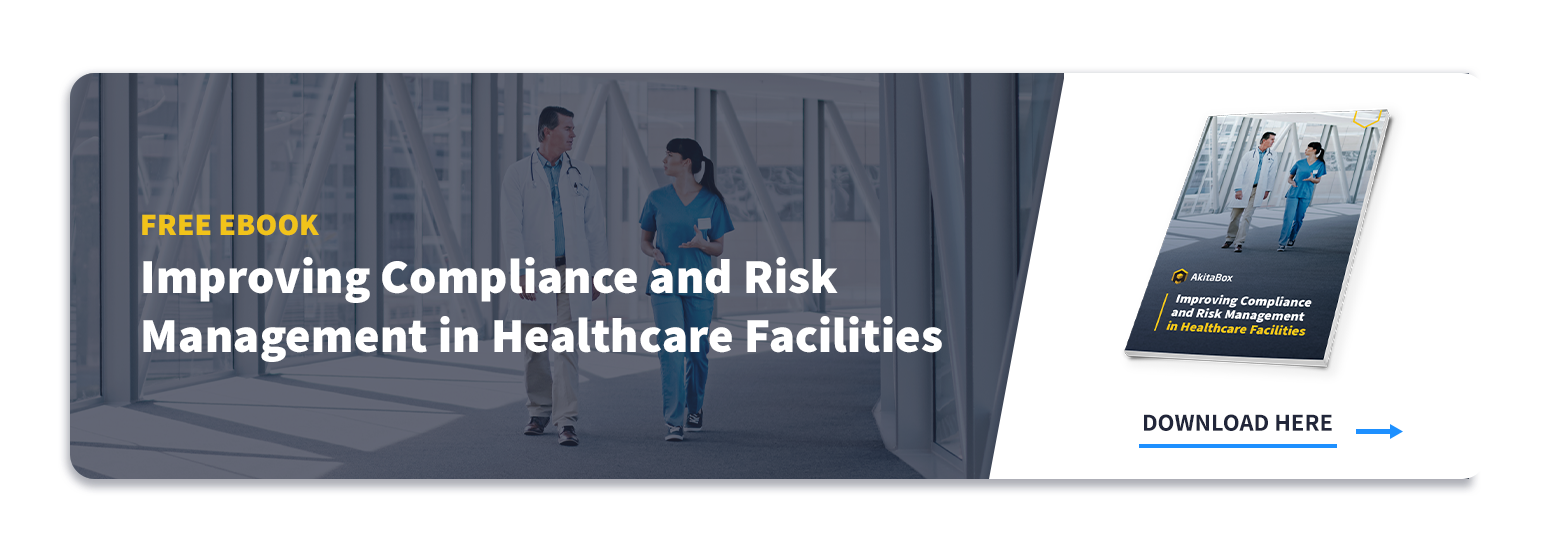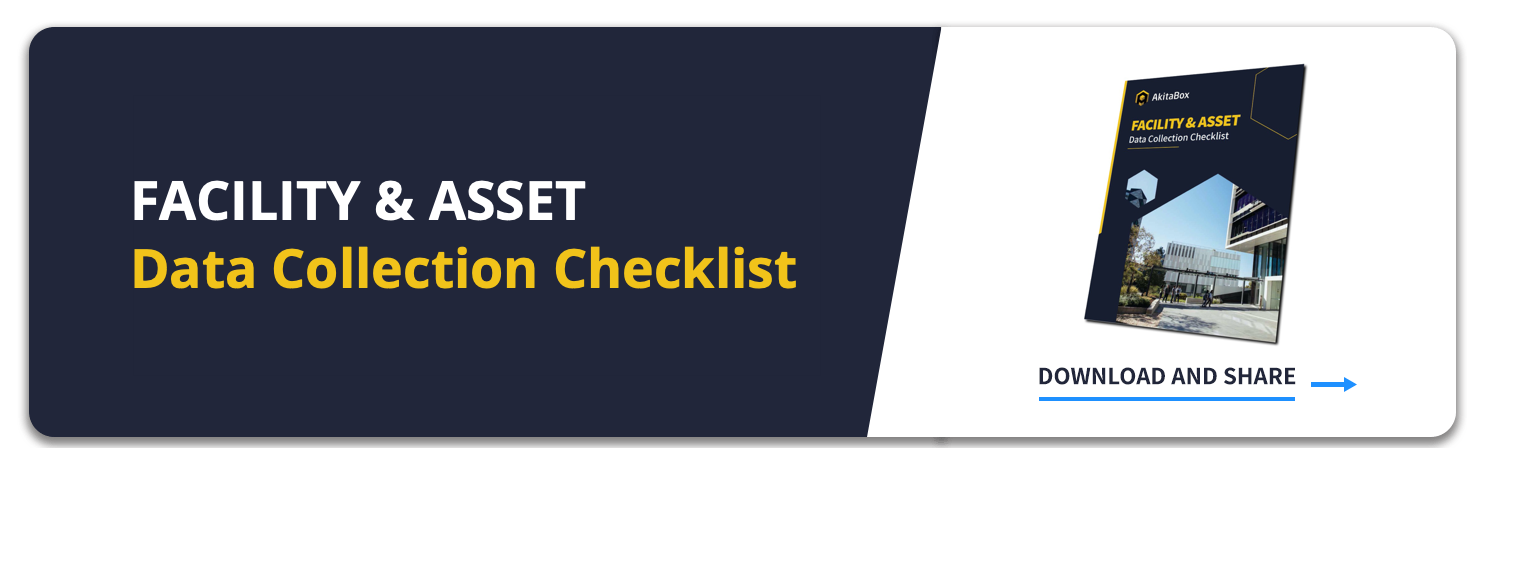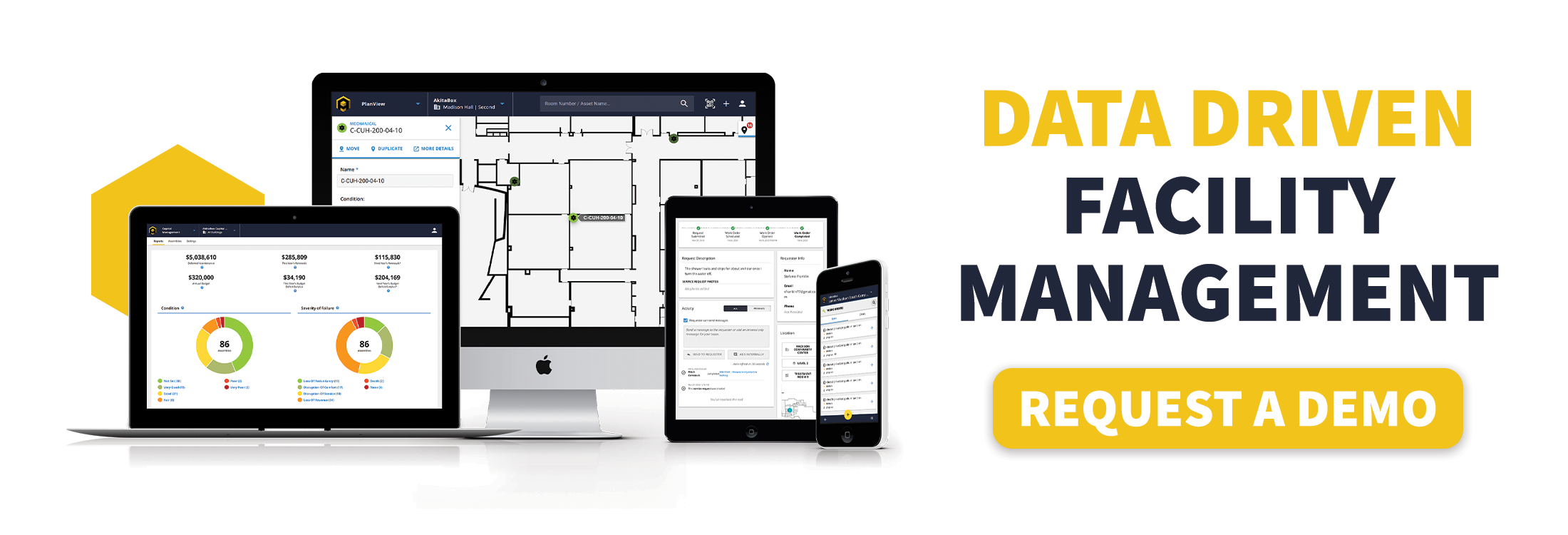5 Ways Data Helps You Better Manage Aging Infrastructure in Healthcare
Healthcare has an aging infrastructure problem. Buildings are getting older. Equipment has been stretched to the limit during the Covid pandemic. And changing health and building codes are making aging facilities obsolete.
In a ranking of states by the average age of their healthcare facilities, Nevada boasts the youngest facilities at 9.7 years old. But that’s far from brand new. On the other end of the spectrum, Hawaii’s healthcare facilities are 22 years old on average. AkitaBox’s home state of Wisconsin comes in at number 35 with facilities averaging 12.8 years old.
On top of that, two other issues add complexity to this situation. First, a growing number of mergers and acquisitions in the healthcare industry mean some organizations will see an influx of new facilities of varying ages and conditions added to their portfolio.
Second, as the U.S. population continues to age, the demand for outpatient clinics and medical offices is ballooning. In fact, up to one-third of hospital revenue is shifting to outpatient sites, while inpatient discharges are declining. So while inpatient facilities keep aging, new outpatient clinics are being built to meet this growing demand.
Facilities managers face a balancing act of dealing with new building projects while also maintaining existing sites of varying ages.
What’s a facilities manager to do? Clinics and hospitals (regardless of their age or size) must keep functioning efficiently and safely. Addressing the issues that come with aging facilities starts with having accurate data. Data can tell you:
- The current condition of your assets
- The remaining useful life of key equipment
- The cost of replacing important assets
- Which buildings are at highest risk of failure
- How much it costs to maintain your buildings
- And lots more
Armed with that information, you can plan ahead, make fiscally responsible decisions, and prevent failures before they occur – greatly minimizing any negative impact on patients and medical staff.

The older your healthcare facilities get, the more important it is to have complete, accurate data on their condition and performance. That’s why a good data management strategy is essential.
In this article, we’ll explore 5 ways a smart approach to data makes it easier to manage aging healthcare facilities.
Living Data that’s Always Current
A huge part of a smart data management strategy is ensuring you always have dependable, up-to-date information at hand. But that’s been easier said than done recently.
Because of Covid, many clinics and hospitals have been overwhelmed with patients since 2019. Trying to collect data in a building filled with sick patients and medical staff rushing everywhere is no easy feat. In many cases, facilities teams simply couldn’t assess their buildings and had to make do with outdated information from their last facility condition assessment (FCA).
But you still need to know the current condition of your assets in order to properly manage your facilities. That’s why many industries – including healthcare – are turning away from traditional FCAs that go stale quickly and must be completely redone every 3-7 years.
“Living” FCAs are conducted once (using specially designed software) and then continuously updated with information from work orders, inspections, and other onsite data from your facilities. No more having to wait 5 years to get a fresh snapshot of your facilities.
You can leverage this always-accurate information to make smarter preventive maintenance, asset replacement, and capital planning decisions.
Read More: 6 Strategies for a Better Healthcare FCA
Smoother Coordination with Third-party FM Partners
Hospital systems lean on their architecture-engineering-construction (AEC) partners a lot for facilities management support. So it’s important to have a system for data and facilities management that everyone can use.
Keeping track of who’s doing what is exponentially harder when people are using different systems. Having an FM system that brings all of your data into one place that everyone works from results in a much stronger and more effective partnership:
- Reduces the likelihood of duplication of effort, confusion, and miscommunication
- Ensures that all work is handled consistently across your organization
- Provides greater visibility into the status of tasks and projects
- Delivers data in a consistent format that makes it easier to notice trends and potential problems

Instead of separate tools for asset management, maintenance and work orders, inspections, FCAs, and capital planning, a comprehensive FM software does it all in one system – making it a key tool in your data management strategy.
Reduced Impacts of Long Lead Times
From chillers to air handling units, hospitals are chock full of important assets that could bring patient care to a screeching halt (not to mention cost you a pretty penny) if they failed. And with our global supply chain still trying to recover from the pandemic, lead times to get replacement assets are longer than ever.
Trustworthy data on the current condition and remaining useful life of key equipment means you can better plan ahead for when the time comes to replace an asset. For example, you know the lead time for a new chiller to arrive is 18 months.
Thanks to your dependable data, you also know your current chiller is about 4 years away from end of life. As a result, you can include the cost of a new chiller in your budget, get it approved, and order it before your current chiller fails.
Consider the alternative. Your chiller fails. You didn’t have the data to see it coming, so you don’t have a replacement on hand. Lead time to ship a new chiller is 18 months. You face two unpleasant options: shut down the affected area of the hospital until a new chiller arrives or pay 10 times the price to get one rushed to you. That’ll be fun explaining in your next budget report.
A good data management approach means you can minimize costs and patient impacts by planning far enough ahead for long lead times.
When to Maintain vs. Rebuild
There comes a point in every healthcare facility’s life when it’s more costly to maintain it than simply tear it down and rebuild. But how can you tell when you’ve reached that point? You guessed it – data.
As long as you can maintain a clinic or hospital for less than it’ll cost to build a new one, you can typically keep on keeping on – up to a point. What is that threshold for your organization?

Should you rebuild once maintenance costs reach one-tenth the cost of a new building? Or one-quarter the cost? Knowing that threshold – and how soon you’re going to reach it – helps you plan ahead for the time, coordination, and expense required to erect a new building.
In some cases, building a brand spanking new facility isn’t an option. Due to space or zoning constraints, you may have to renovate your existing facility instead. Data can help there, too.
Remodeling a hospital while it’s still actively serving the community is an expensive undertaking that impacts facility operations. Data helps you maintain those spaces and keep them viable for as long as possible until renovations become necessary. In addition, data helps you plan out the rebuild in a way that minimizes the effects on patient care as much as possible.
A Single Source of Truth
As you can see, facilities data is at the core of a successful approach to aging healthcare infrastructure. When it’s organized, connected, and accessible, that data is a powerful source of insights – both on an organization-wide level and a granular level.
But if your data is disconnected, disorganized, and difficult to find, you’re not going to get those benefits. Many healthcare organizations have embraced software technology to help manage their data. But without a single source of truth – an ultimate reference point for all stakeholders containing accurate, up-to-date, and consistent facilities information – your software (and as a result, your data) can get out of control.
One hospital system we worked with had nearly 30 separate pieces of software for managing the facilities. All that software was maintained by 12 different departments. Every piece of software tracked information like square footage and room number. That meant 12 unique departments all had someone running around gathering the same square footage information for those 30 pieces of software.
Situations like that are a mess of overlap, duplication, and confusion with no single source of truth. As a result, there’s poor visibility into what data you have and what the big picture looks like. Good luck trying to sort through all that to determine if you’re properly maintaining your aging facilities.
A single source of truth is the solution – and it’s possible to create one even if you already have multiple software systems implemented in your organization.
AkitaBox: Designed for Better Data Management
Does your approach to facilities data management need some improvement? The right system can make all the difference.
AkitaBox facilities management software is designed to be that single source of truth, that ultimate repository of data. It houses the key information you need, including:

- Digital floor plans
- Square footage
- Asset data and locations
- Work order history
- Preventive maintenance plans
- Inspections
- Facility condition assessments
By tracking all of this, AkitaBox can make this information available to your existing software systems – giving them more accurate data to operate with and adding value to your existing software stack.
Plus, with AkitaBox it’s easy for your team to access, sort, view, and update the data, giving you an always improving – living – stream of information to draw from.
With a complete, up-to-date view of your facilities portfolio, you can base your maintenance decisions, asset replacement predictions, and capital planning on accurate, defensible data.
Discover how one healthcare system in the central U.S. is using AkitaBox to manage their complex asset data in a format that’s easy for everyone to understand. You can also learn more about how AkitaBox supports facilities management in the healthcare industry.
Healthcare is a unique industry. When something goes wrong with a building, lives are at stake. Everyone on the facilities team plays a role in saving people’s lives. Having a data management system you can trust helps keep your healthcare facilities safe, in compliance, and one step ahead of any looming emergencies.
So what are you waiting for? Your buildings aren’t getting any younger. Whip your facilities data into shape with help from AkitaBox. Contact us today.



